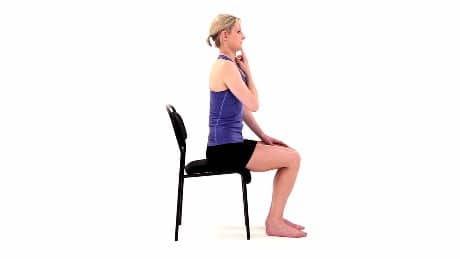Most people have experienced some type of headache in their lifetime. How to prevent or treat headaches depends on what kind you experience. There are four common types of headaches.

Types of Headaches:
- Migraine
- Tension
- Sinus
- Cluster
Migraines
Migraine is the most common form of headache. The term “migraine” refers to a headache which is usually (but not always) on one side of the head. It is a headache that lasts from two to seventy-two hours, typically, and it is often associated with nausea and/or vomiting, sensitivity to light and/or sound. The character of the pain is typically a throbbing pain.
There are several categories of migraines: migraines that are preceded by a warning symptom, called an aura, are known as classic migraine or migraine with aura. Migraines that begin with pain and no warning are known as common migraine or migraine without aura.
Migraine is a genetic and chronic disease like asthma or diabetes. There is currently no cure for migraines, although the medical community is becoming more skilled in managing the condition. Knowing what triggers your migraine, modifying your lifestyle to avoid that trigger, and seeking out therapeutic modalities to reduce the intensity and frequency is key to improving your quality of life.
Tension Headache
Tension-type headaches are probably the second most common kind of headache after migraine. They are often felt as a painful band around the back of the head, the temples and forehead, as if a tight hat were in place. Tight muscles are thought to be the cause, which can result from injury, stress, or a variety of other factors. They can last from hours to days and can co-exist with migraine, one can triggering the other. Tension-type headache is often responsive to physical therapy, relaxation therapy and anti-inflammatories or muscle relaxants.
Sinus Headaches
Sinuses are spaces that line the inside your forehead, cheekbones, and behind the bridge of your nose. They can become inflamed due to an allergic reaction or an infection, causing them to swell, make more mucus, and the channels that drain them can get blocked. Built-up pressure in your sinuses causes pain that feels like a headache. Generally there is pain in your cheekbones, forehead, or the bridge of your nose, which usually gets stronger when you move your head suddenly. Treatment for this sinus headache may include antihistamines, decongestants, using a humidifier, or a nasal spray.
Cluster Headache
A cluster headache is relatively short-lived (compared with migraine), lasting usually between 20 minutes and two hours. It is always one-sided and is associated with symptoms such as a stuffy nose on one side, tearing, an enlarged pupil, or a droopy eyelid.
These can occur several to many times a day for a period of days to weeks, and then disappear for a variable amount of time, usually weeks to months. Treatments for cluster differ significantly from treatments for other headache types. Clusters are, by reputation, some of the most painful headaches imaginable. It is important to have a treatment plan in place before a cluster begins. Equally important is getting an exam by a neurologist if you believe you are experiencing cluster headaches.
Treating/Preventing Headaches
Treating your headache really depends on what type you have.
Avoiding the trigger for migraines helps to reduce their likelihood. Managing upper respiratory issues like allergies and colds with proper medication is a good idea for preventing sinus headaches. Seeing a neurologist to address suspicions of cluster headaches is the first step to take if those symptoms plague you. Tension headaches may be relieved with improving your posture with stretching, some light exercise, and changing a few daily habits. Below are some stretches that may help:
Stretches for Tension Headaches

While standing or sitting, grab your wrist and move your ear to the opposite shoulder, feeling a stretch from below your ear to the top of your shoulder. Hold 15-20 seconds, perform both sides 1-2 times a day. If this stretch feels too intense, just let your hands rest by your sides.

While sitting or standing, turn head and look down with a slight chin tuck towards your chest (you should feel at the back of neck). Hold 15-20 seconds, perform both sides 1-2 times a day.

Place bent elbows on a door frame and slowly walk forward until you feel a stretch across your chest and the front of shoulders. Hold 15-20 seconds, perform 1-2 times a day.

Begin standing upright position with your elbows bent to 90 degrees and tucked at your sides. Slowly rotate your forearms out to your sides, pointing your thumbs towards the wall behind you. Squeeze your shoulder blades down and together. Hold 5-10 seconds, then return to the starting position and repeat 5 times, 1-2 times daily. Make sure to maintain an upright posture and do not shrug your shoulders during the exercise.

In an upright sitting or standing position, slide your chin backwards. Avoid moving your chin to your chest. Lengthen the back of your neck as if trying to become taller. Hold 5 seconds and repeat 5 times, 1-2 times per day.
If you suspect a cluster headache or migraine is keeping you from living pain-free, please make an appointment to see a neurologist or your primary doctor. Our staff physical therapist is here to help you address muscular tightness and restrictions that might be causing your tension headaches. Be well!
source: https://stanfordhealthcare.org/medical-conditions/brain-and-nerves/headache/types.html




